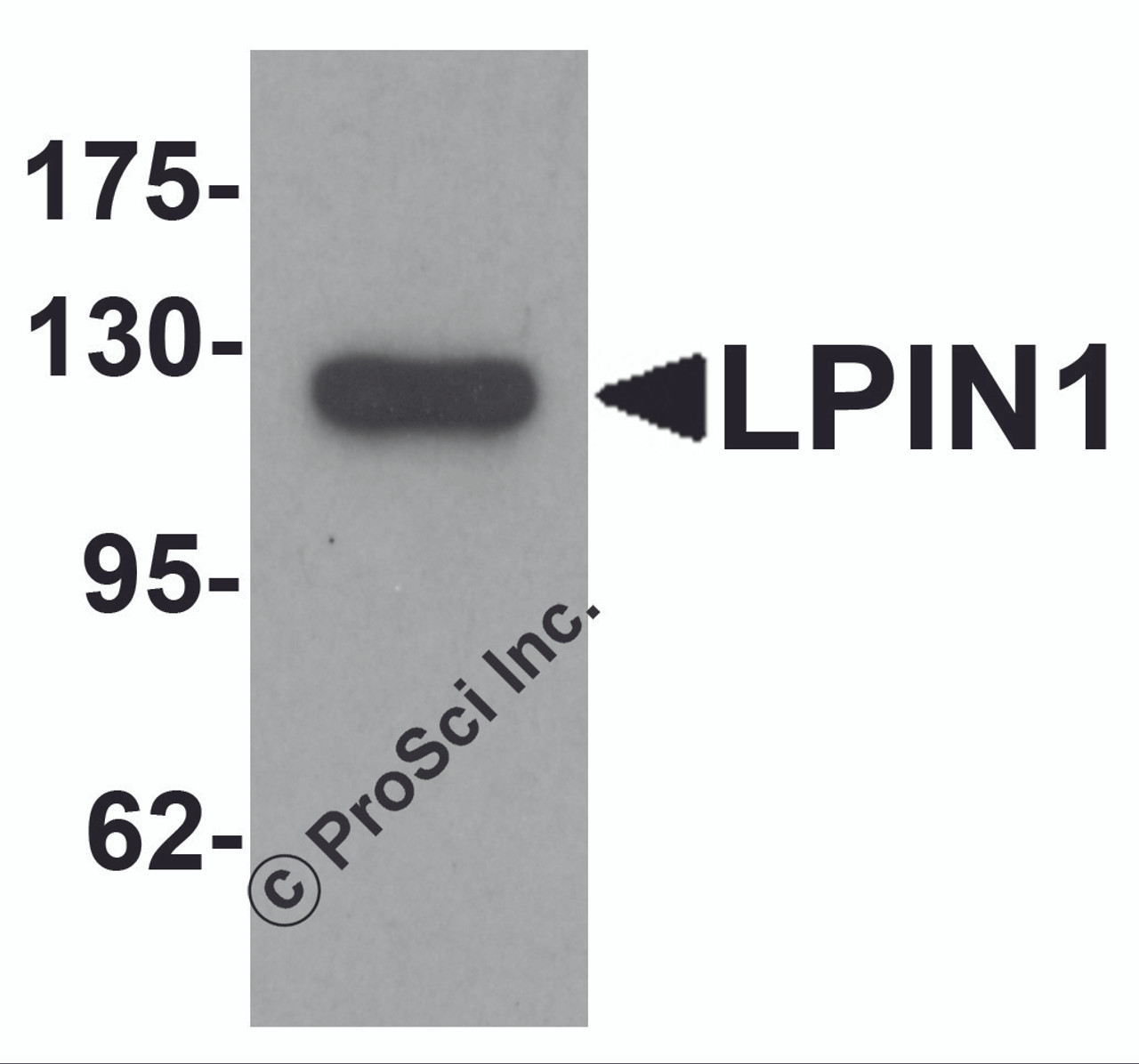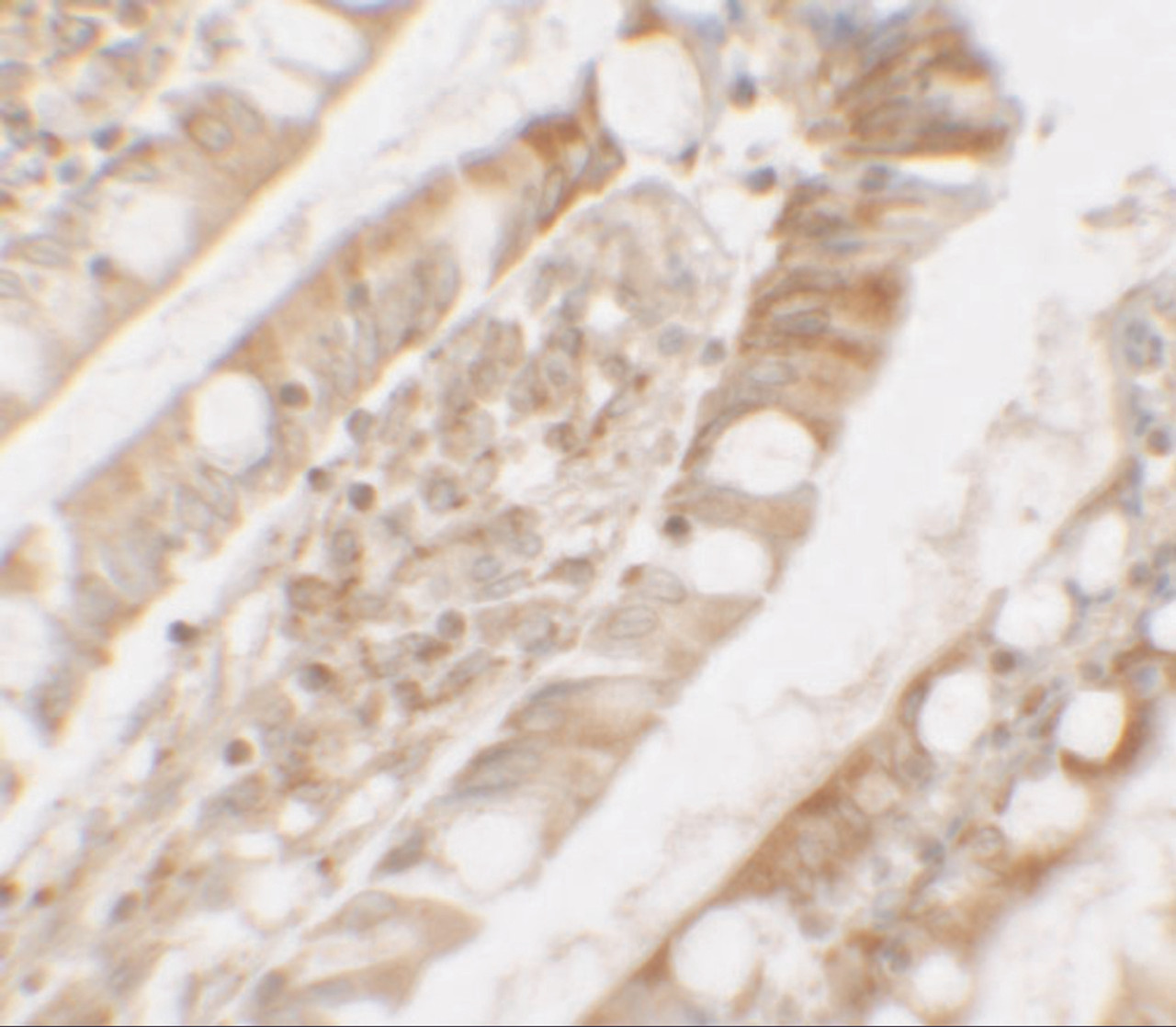Product Description
LPIN1 Antibody | 7393 | ProSci
Host: Rabbit
Reactivity: Human, Mouse, Rat
Homology: N/A
Immunogen: LPIN1 antibody was raised against an 18 amino acid peptide near the carboxy terminus of human LPIN1.
The immunogen is located within the last 50 amino acids of LPIN1.
Research Area: Stem Cell
Tested Application: E, WB, IHC-P, IF
Application: LPIN1 antibody can be used for detection of LPIN1 by Western blot at 1 - 2 μg/mL.
Antibody validated: Western Blot in human samples; Immunohistochemistry in human samples and Immunofluorescence in human samples. All other applications and species not yet tested.
Specificiy: LPIN1 antibody is human and mouse reactive. At least four isoforms of LPIN1 are known to exist.
Positive Control 1: Cat. No. 1204 - K562 Cell Lysate
Positive Control 2: Cat. No. 11-801 - Human Small Intestine Tissue Slide
Positive Control 3: N/A
Positive Control 4: N/A
Positive Control 5: N/A
Positive Control 6: N/A
Molecular Weight: Predicted: 107 kDa
Observed: 125 kDa
Validation: N/A
Isoform: N/A
Purification: LPIN1 Antibody is affinity chromatography purified via peptide column.
Clonality: Polyclonal
Clone: N/A
Isotype: IgG
Conjugate: Unconjugated
Physical State: Liquid
Buffer: LPIN Antibody is supplied in PBS containing 0.02% sodium azide.
Concentration: 1 mg/mL
Storage Condition: LPIN antibody can be stored at 4˚C for three months and -20˚C, stable for up to one year.
Alternate Name: LPIN1 Antibody: PAP1, KIAA0188, Phosphatidate phosphatase LPIN1, Lipin-1
User Note: Optimal dilutions for each application to be determined by the researcher.
BACKGROUND: LPIN1 Antibody: LPIN1, also known as PAP1, is a magnesium-ion-dependent phosphatidic acid phosphohydrolase enzyme that catalyzes the penultimate step in triglyceride synthesis including the dephosphorylation of phosphatidic acid to yield diacylglycerol (reviewed in 1) . LPIN1 is required for adipocyte differentiation and it also functions as a nuclear transcriptional coactivator with some peroxisome proliferator-activated receptors to modulate expression of other genes involved in lipid metabolism (1, 2) . Mutations in LPIN1 are associated with metabolic diseases such as type 2 diabetes and recurrent acute myoglobinuria (3, 4) and it is also a candidate for several human lipodystrophy syndromes (5) .
 Euro
Euro
 USD
USD
 British Pound
British Pound
 NULL
NULL












